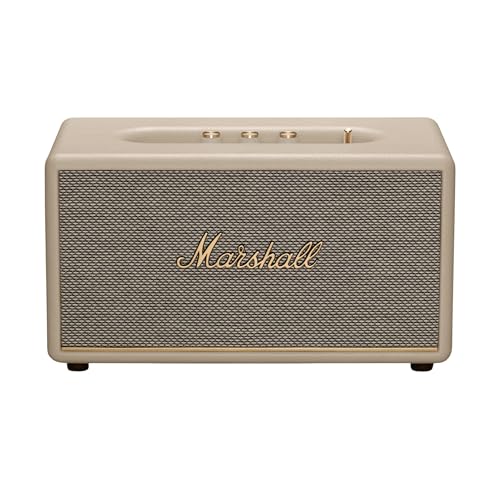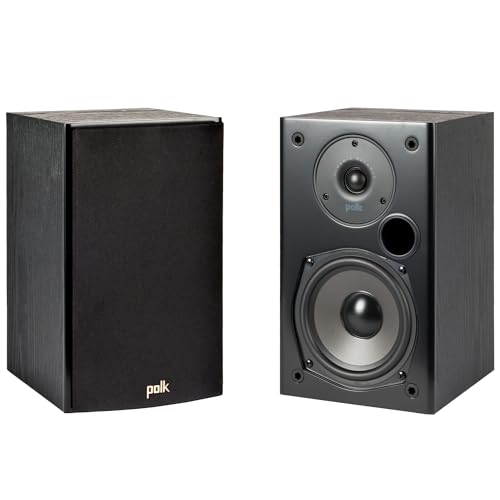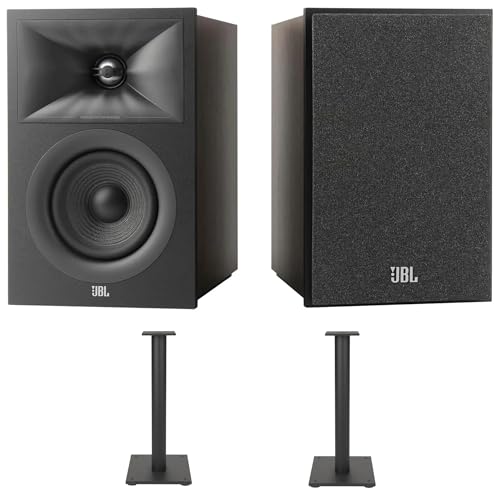There’s a moment every music lover experiences. You get home, you want to unwind, and you just want to fill the room with your favorite album. For me, that used to mean a ritual of powering on a receiver, selecting the right input, making sure the speaker connections were solid, and then finally, navigating a playlist. As a long-time audio enthusiast with a collection of vintage hi-fi gear, I appreciate the nuance and ceremony of it all. But my wife, and frankly, a growing part of myself, started craving simplicity. We wanted that big, room-filling sound without the tangled wires and multi-step processes. The market is flooded with smart speakers that promise convenience but often require buggy apps, constant updates, and a surrender of privacy. We were looking for a middle ground: a speaker that was unapologetically about the music, looked incredible, and was as easy to use as a vintage amplifier. The challenge was finding a device that delivered premium audio quality with the straightforward simplicity of “turn it on, pair it, and play.”
- HOME-FILLING SOUND: Stanmore III has an even wider soundstage than its predecessor, delivering immersive, home-filling Marshall signature sound.
- PAIR, PLAY AND TURN IT UP: Stanmore III is straight to business, so you can just pair and play without the hassle of a complex set-up.
- NEXT-GENERATION BLUETOOTH: Stanmore III is ready for the future of Bluetooth technology and has been built to deliver next-generation Bluetooth features the moment they are available.
What to Consider Before Buying a Bookshelf Speaker
A bookshelf speaker is more than just an item; it’s a key solution for transforming a room’s atmosphere with high-quality audio without the footprint of large floor-standing towers. They solve the problem of tinny, lifeless sound from laptop or phone speakers, providing a rich, detailed, and immersive listening experience. The main benefits are a perfect balance of size, power, and aesthetic appeal, making them versatile enough for living rooms, offices, bedrooms, and even workshops. They serve as a bridge between casual listening and true audiophile-grade setups, offering a significant sonic upgrade in a relatively compact package.
The ideal customer for this type of product is someone who prioritizes sound quality and design in their living space. They are music aficionados, vinyl collectors, or simply individuals who want to elevate their daily listening, from podcasts to classic rock anthems. This product category, however, might not be suitable for those who need extreme portability for outdoor use, as most high-quality bookshelf speakers require a power outlet. It’s also not for the user whose primary need is smart home integration and voice commands, as many are focused purely on audio performance. For ultimate portability, a small, battery-powered Bluetooth speaker would be a better choice, while those seeking a voice-activated hub might look at smart speakers.
Before investing, consider these crucial points in detail:
- Dimensions & Space: Measure your intended space carefully. The Marshall Stanmore III Bluetooth Home Speaker measures 13.78″ wide, so you’ll need a sturdy shelf, console, or countertop. Consider the speaker’s depth (8″) as well to ensure it doesn’t overhang, and allow for some space behind it for proper bass response and cable management.
- Performance & Connectivity: Look at the power output (watts) and frequency response. The Stanmore III’s 80 watts deliver substantial volume, and its 45 Hz frequency response ensures deep, tangible bass. Crucially, evaluate the connectivity options; this model excels with modern Bluetooth 5.2, classic RCA for turntables, and a 3.5 mm auxiliary input, offering incredible versatility.
- Materials & Durability: A speaker is also a piece of furniture. The Stanmore III’s iconic design is backed by a PVC-free build using 70% recycled plastic and vegan materials, offering a blend of rock ‘n’ roll aesthetics and modern sustainability. The tactile brass knobs and sturdy cabinet feel built to last, a point many users confirm.
- Ease of Use & Maintenance: Do you want to be tied to an app, or do you prefer direct control? The Stanmore III champions simplicity with physical knobs for volume, bass, and treble. This eliminates the frustration of app glitches or connectivity issues, offering an immediate, tactile connection to your sound. Maintenance is simple: a gentle dusting is all it needs.
Keeping these factors in mind, the Marshall Stanmore III Bluetooth Home Speaker stands out in several areas, particularly its blend of high-performance audio, timeless design, and straightforward user experience. You can explore its detailed specifications here.
While the Marshall Stanmore III Bluetooth Home Speaker is an excellent choice, it’s always wise to see how it stacks up against the competition. For a broader look at all the top models, we highly recommend checking out our complete, in-depth guide:
- 2 x AUX INPUT - Convenient connection to any device that has a 3.5mm headphone output or dual RCA output. Play from two devices via AUX at the same time, no plugging and switching needed
- EXPERIENCE AMAZING HOME THEATER SOUND WITH RICH, IMMERSIVE AUDIO – Featuring a 0.75" tweeter and a 5.25" Dynamic Balance driver, these passive bookshelf speakers deliver clear, balanced sound with...
- Each speaker in the Stage 2 series features Polycellulose ribbed cone woofers
First Impressions: A Rockstar Unboxing
Pulling the Marshall Stanmore III Bluetooth Home Speaker from its box felt less like unboxing an electronic device and more like unveiling a piece of music history. We chose the Cream color, and it was immediately striking. The textured vinyl covering, the salt-and-pepper fret, and the iconic script logo are pure Marshall, instantly evoking images of legendary concert stages. At just under 10 pounds (despite the spec sheet’s error), it has a reassuring heft that speaks to the quality of the components within—the powerful magnets, the dense cabinet, and the robust amplifier. There’s no flimsy plastic here.
The top panel is where the magic happens. The brushed brass plate is gorgeous, and the analog control knobs for bass, treble, and volume have a satisfying, weighted resistance. The source selection button and the track control rocker switch click with precision. And the power toggle—a classic, satisfying metal lever—is infinitely more gratifying than a soft-touch button. Setting it up was laughably simple: plug in the power cord, flip the switch, select Bluetooth, and pair with a phone. It took less than 30 seconds, with no app download or Wi-Fi password required. This immediate, hassle-free experience is a monumental win in a market saturated with overly complicated “smart” devices.
Advantages
- Expansive, room-filling stereo sound with deep, adjustable bass.
- Iconic, rock ‘n’ roll design that doubles as a statement decor piece.
- Incredibly simple, app-free setup with tactile analog controls.
- Versatile connectivity with Bluetooth 5.2, RCA, and 3.5mm Aux inputs.
- Sustainable build with recycled plastic and vegan materials.
Drawbacks
- Requires a constant power source; not a portable speaker.
- Some user reports of minor cosmetic flaws (e.g., seams) on certain colorways.
A Deep Dive into the Stanmore III Experience
After several weeks of intensive testing, putting the Marshall Stanmore III Bluetooth Home Speaker through its paces with everything from the raw energy of AC/DC to the delicate acoustics of Nick Drake and the thumping bass of electronic music, it’s clear this speaker is more than just a pretty face. It’s a meticulously engineered audio machine designed for pure musical enjoyment.
Signature Marshall Sound: A Sonic Breakdown
Marshall built its legend on sound, and the Stanmore III proudly carries that torch. This isn’t just a loud speaker; it’s a nuanced and powerful audio system. The re-engineered two-way driver system, featuring a 5.25-inch woofer and dual ¾-inch tweeters, creates an impressively wide soundstage. Marshall claims the tweeters are angled outwards and use updated waveguides, and in practice, this translates to a sound that feels much larger than the speaker’s physical dimensions. Walking around the room, we found the audio to be remarkably consistent, without the narrow “sweet spot” that plagues many smaller stereo speakers.
The built-in Dynamic Loudness is a standout feature. It subtly adjusts the tonal balance as you change the volume, ensuring the sound remains rich and full, even at low, late-night listening levels. This was confirmed by one user who noted it “sounds clear with plenty of base at high and low volumes with every genre.” When we cranked it up, the 80 watts of Class D amplification came alive. The bass, which reaches down to a solid 45 Hz, is punchy and tight, not boomy or distorted. Listening to Led Zeppelin’s “When the Levee Breaks,” John Bonham’s iconic drum intro hit with physical impact, while the mids and highs remained crisp and clear. The ability to fine-tune the sound with the physical bass and treble knobs is a godsend for audiophiles, allowing you to dial in the perfect sound for your room and your musical tastes—a level of control many app-based EQs fail to replicate with such ease and satisfaction.
Timeless Design and Tactile Control
In a world of minimalist, fabric-covered cylinders, the Marshall Stanmore III Bluetooth Home Speaker makes a bold statement. It doesn’t try to blend in; it demands to be seen. The design DNA is pulled directly from Marshall’s legendary guitar amplifiers, and this authenticity is its greatest strength. The Cream finish is elegant yet edgy, fitting beautifully into our home decor, a sentiment echoed by a user who was tired of “ugly speakers.” This speaker is a conversation starter, a piece of functional art that celebrates the rock ‘n’ roll ethos.
The user experience is defined by its tactile nature. Turning the machined brass knobs to adjust the volume or add a bit of treble provides a satisfying, tangible connection to the music that is lost with sliders on a smartphone screen. As one reviewer aptly put it, “The physical dials and nobs on the speaker are sturdy and make it fun and easy to adjust the sound.” This commitment to analog control is a deliberate choice, catering to those who, like us, are weary of app-dependent ecosystems. We never once experienced a connection drop or a software bug, because the core functionality doesn’t rely on them. While there is an optional app for firmware updates and placement compensation, we found it entirely unnecessary for daily operation, which is a massive plus. The build quality is largely exceptional, though we must acknowledge a user report pointing out a visible seam on the bottom of their Cream model. While our review unit was flawless, it’s a potential quality control inconsistency worth noting for discerning buyers.
Connectivity: Effortless, Versatile, and Future-Proof
The Stanmore III shines in its ability to connect to virtually any audio source with ease. The primary method for most will be Bluetooth, and the implementation of Bluetooth 5.2 is flawless. Pairing is instantaneous, and the connection remained rock-solid from across a large room, easily hitting the advertised 33-foot range. One of the most common complaints with Bluetooth speakers is the pairing process, but as one user celebrated, “The Bluetooth connects effortlessly every time which is usually my biggest beef with Bluetooth speakers.” We also loved that it can connect to multiple devices simultaneously, making it easy to switch between a phone and a laptop without re-pairing.
But the true versatility comes from its wired inputs. The RCA inputs are a game-changer for vinyl enthusiasts. We hooked up our turntable, and the experience was sublime. The speaker delivered the warm, analog sound of our records with power and clarity, confirming another user’s report that it “works and sounds fabulous” with a record player. The 3.5mm auxiliary input provides another reliable fallback for connecting everything from older iPods to PCs. This triple-threat of connectivity—modern Bluetooth, classic RCA, and universal Aux—makes the Marshall Stanmore III Bluetooth Home Speaker a truly versatile audio hub for any home. You can see all the connectivity options in detail here.
What Other Users Are Saying
The overwhelming sentiment from users mirrors our own positive experience. Many, like the hi-fi collector who bought one for his wife, praise its incredible simplicity: “turn it on, pair it with your device, and play–you do not need an app to get it up and running.” This theme of hassle-free enjoyment is a recurring one. The sound quality is frequently described as “amazing,” “superb,” and “a powerhouse of sound.” One enthusiastic user declared it the “GREATEST SPEAKER SYSTEM OF ALL TIMES!!!” for its clean sound and bass.
However, the feedback isn’t universally perfect, providing a realistic picture. One user, who wanted to use it for practicing lead guitar over backing tracks, found it wasn’t as loud as they had hoped, suggesting it couldn’t compete with a dedicated guitar amplifier in a practice session. This is a fair point; it’s a home stereo speaker, not a PA system. The most specific critique came from the buyer who received a Cream unit with a noticeable cosmetic seam on the bottom, a flaw they found “unacceptable for a speaker as expensive as this.” This highlights a potential inconsistency in manufacturing that, while likely not widespread, is a valid concern for a premium-priced product.
Alternatives to the Marshall Stanmore III Bluetooth Home Speaker
While the Stanmore III is a formidable contender, its specific focus on sound, style, and simplicity means it won’t be the perfect fit for everyone. Here’s how it compares to three distinct alternatives.
1. Klipsch R-41M Bookshelf Speakers
- Single 4" spun-copper IMG woofer
- 1" aluminum LTS tweeter mated to a 90x90 square Tractrix Horn
- 68 hertz - 21 kilohertz +/- 3dB; Nominal impedance - 8 ohms; Compatible crossover frequency – 1,730 hertz
The Klipsch R-41M speakers are for the budding audiophile who wants to build a traditional component stereo system. Unlike the all-in-one Stanmore III, these are passive speakers, meaning they require a separate amplifier or receiver to work. This offers greater flexibility for system building and customization but also introduces more complexity and cost. They are known for a very lively, dynamic sound signature thanks to Klipsch’s signature Tractrix horn tweeter. If you already own an amplifier and prioritize a classic two-channel stereo separation for critical listening, the Klipsch R-41M is an excellent, high-performance alternative.
2. Micca MB42 Bookshelf Speakers Pair
- The MB42 is a demonstration of our designers’ love for the classic compact bookshelf speaker. Handsomely styled with simple contours and modern design cues, the MB42 is easy to place and blends into...
- Our design starts with carefully picked drivers that mesh perfectly in the critical crossover overlap region. It incorporates a balanced woven carbon fiber woofer for enhanced transient and impactful...
- The fabric front grills are easy to take off and put on. Leave them on for a classic look or take them off to show off the incredibly handsome drivers. Full size 5-way binding posts provide the full...
The Micca MB42 speakers represent the ultimate entry point into the world of passive hi-fi. They are incredibly affordable and offer a surprisingly balanced and detailed sound for their price. Like the Klipsch, they are passive and require an external amplifier. Someone might prefer the Micca pair if they are on a tight budget and enjoy the DIY aspect of piecing together a sound system from scratch. They lack the powerful bass, iconic design, and built-in convenience of the Stanmore III, but they provide a fantastic sonic foundation for a budget-conscious listener.
3. Amazon Echo Dot Alexa Smart Speaker
- Our best sounding Echo Dot yet – Enjoy an improved audio experience compared to any previous Echo Dot with Alexa for clearer vocals, deeper bass and vibrant sound in any room.
- Your favorite music and content – Play music, audiobooks, and podcasts from Amazon Music, Apple Music, Spotify and others or via Bluetooth throughout your home.
- Alexa is happy to help – Ask Alexa for weather updates and to set hands-free timers, get answers to your questions and even hear jokes. Need a few extra minutes in the morning? Just tap your Echo...
The Amazon Echo Dot operates in a completely different universe. Its primary selling point isn’t audio fidelity but smart functionality. It’s for the user who wants to control their smart home, ask for weather updates, set timers, and enjoy casual music streaming using voice commands. While its sound quality has improved over generations, it cannot compete with the power, detail, and stereo soundstage of the Marshall Stanmore III. The Echo Dot is a utility-focused smart device that also plays music; the Stanmore III is a music-focused audio device with smart, simple connectivity.
The Final Verdict: A Modern Classic
After extensive hands-on testing, it’s clear that the Marshall Stanmore III Bluetooth Home Speaker is an absolute triumph. It successfully marries the legendary Marshall aesthetic and powerful, room-filling sound with the modern convenience of Bluetooth and versatile wired inputs. It’s built for the person who loves music and wants a straightforward, high-quality listening experience without the fuss of apps and complex ecosystems. Its tactile controls are a joy to use, and it’s a stunning piece of decor that will elevate any room it’s in.
While it isn’t portable and some may desire integrated smart features, its purposeful focus on pure sound and simplicity is its greatest strength. It’s a worthy investment for anyone looking to make a significant upgrade to their home audio. For the style-conscious music lover who values both form and function, the Stanmore III is, without a doubt, one of the best home speakers you can buy. If you’ve decided the Marshall Stanmore III Bluetooth Home Speaker is the right fit, you can check its current price and purchase it here.
Last update on 2025-11-02 / Affiliate links / Images from Amazon Product Advertising API







